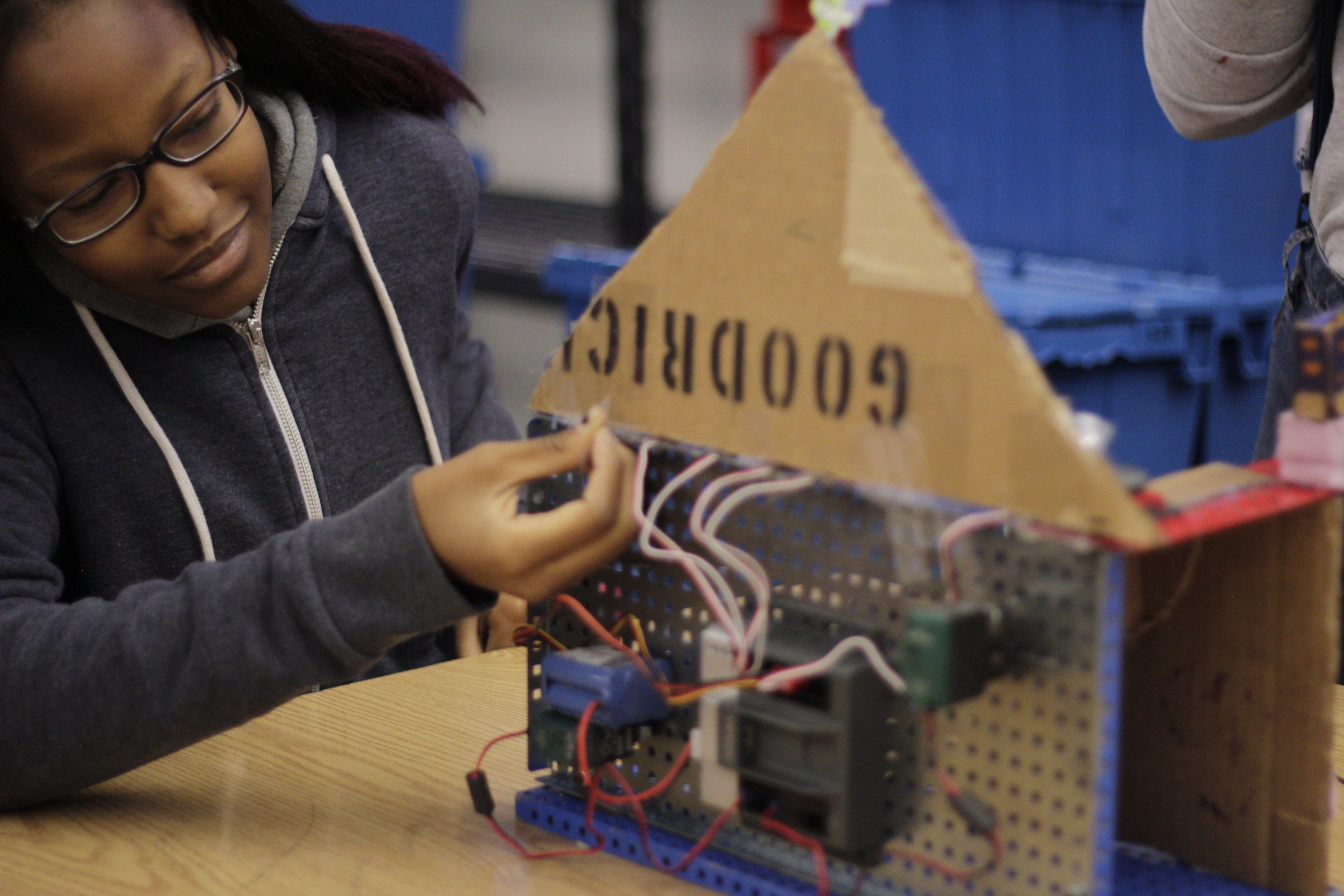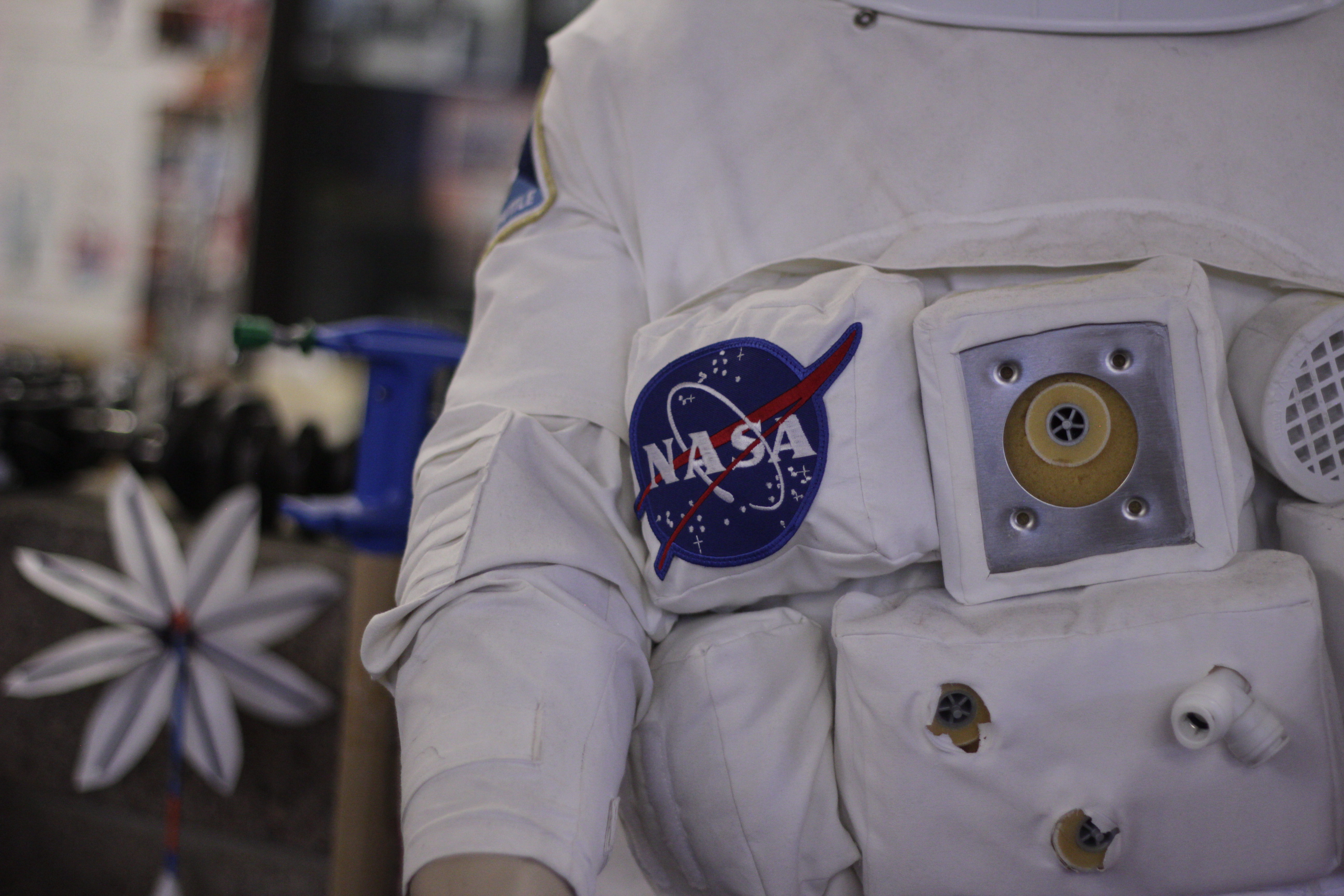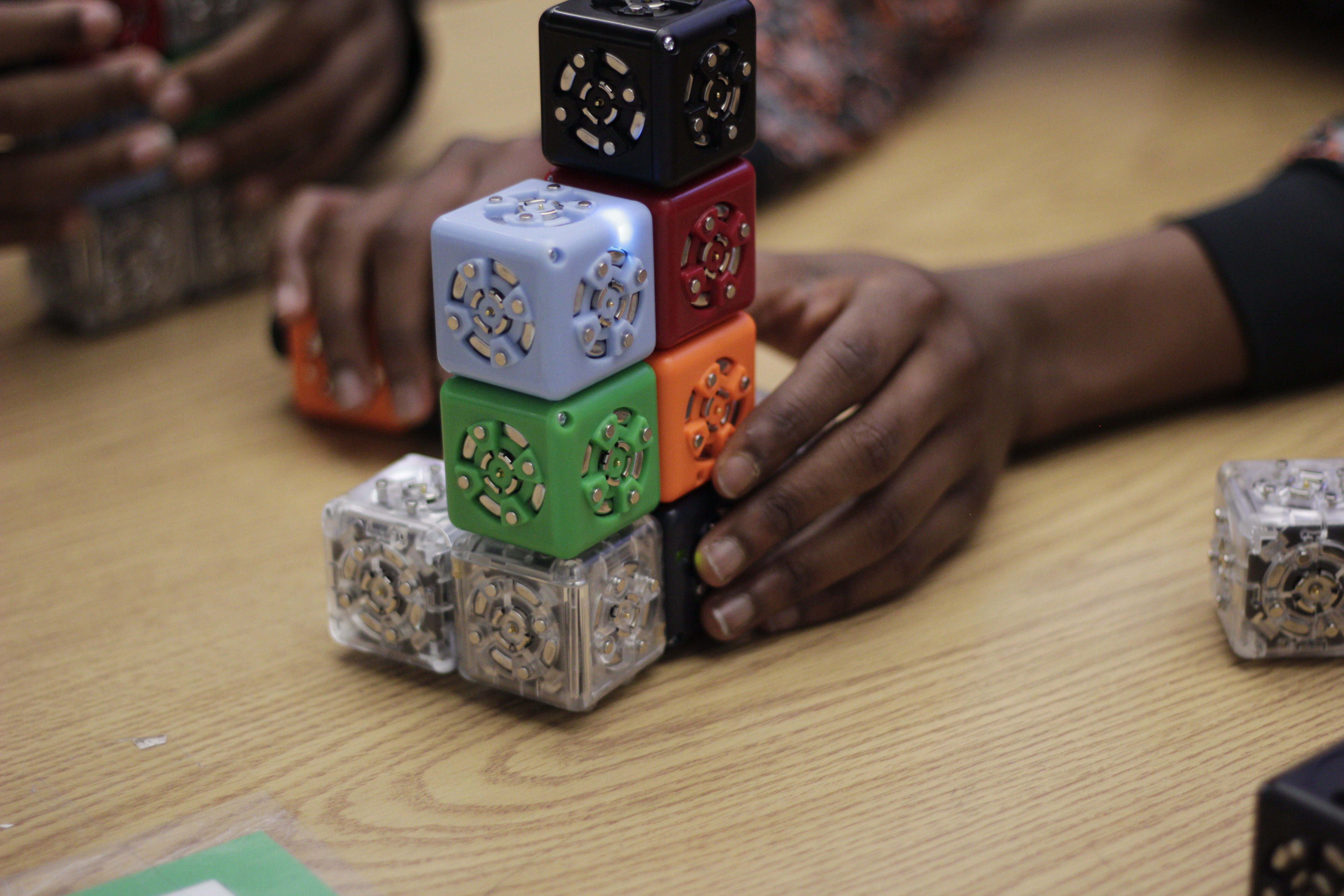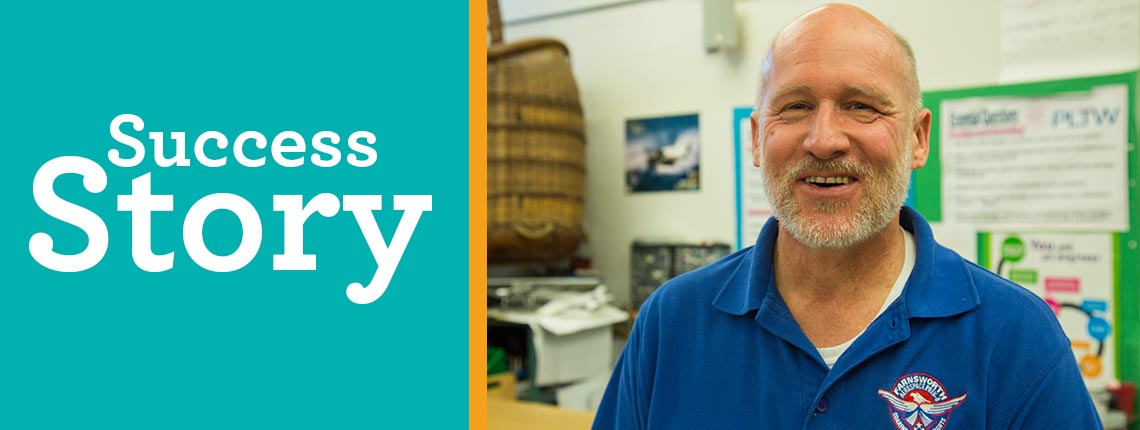David Barrett teaches engineering, robotics, and aviation to 180 middle school students at the NASA-affiliated Farnsworth Aerospace School. His classroom needs to be stocked with up-to-date technology for his students to learn these advanced subjects hands-on. When students walk into his classroom for the first time, they’re surprised by the vastness of space and amount of exciting materials that fill it.
Eighty-percent of Barrett’s students come from low-income households, and his classroom is one of the few places where they have access to technology. This unique classroom offers students from all socioeconomic backgrounds hands-on engineering and robotics training that many high-needs schools can’t offer.
Unfortunately, Barrett’s program is on the verge of being cut due to the school district’s shrinking budget.
Removing the Digital Divide So His Students Succeed
Most of the students in Barrett’s classroom don’t own the technology items that many of us take for granted. To reduce insecurities his students may have about their lack of resources, Barrett spends upwards of $2,000 of his own money each year to ensure they have equal access to technology.
 “We make a lot of assumptions that everyone has the newest iPhone, apps, and technology tools,” said Barrett. “Inner city folks, at least where I’m working, do not have these resources.”
“We make a lot of assumptions that everyone has the newest iPhone, apps, and technology tools,” said Barrett. “Inner city folks, at least where I’m working, do not have these resources.”
The Bureau of Labor Statistics estimated in 2015 that computer and information technology jobs will grow 12 percent between 2014 and 2024, faster than the average growth across all occupations. Barrett works hard and spends his own funds to ensure his students are prepared for the future job market.
If Barrett’s program is cut due to budget restrictions, Farnsworth students won’t have the same hands-on tech training they’re currently receiving.
“One of the things I really wish to do for my students is to help them see there is a life outside of the six-block area of which they live,” said Barrett. “A lot of children don’t know what they’re going to do with their lives, and if I can create a hopeful space in my classroom then that’s what I need to do.”
Lending a Hand With the AdoptAClassroom.org STEM Fund
Barrett created a classroom page on AdoptAClassroom.org in the hopes that he could fund the projects that he couldn’t provide out-of-pocket. He has since received a $2,000 grant –made possible by people like you– from the AdoptAClassroom.org STEM Fund to prevent his students from feeling limited in what they can achieve.
 “Opportunities to crowdfund and find connections to donors is critical,” said Barrett. “One of the reasons why I asked AdoptAClassroom.org for funds is that I needed to make sure I could sustain what I think is legitimate, great work.”
“Opportunities to crowdfund and find connections to donors is critical,” said Barrett. “One of the reasons why I asked AdoptAClassroom.org for funds is that I needed to make sure I could sustain what I think is legitimate, great work.”
Using the donated funds, Barrett purchased Cubelets for his classroom. Cubelets are small cube-shaped robots that can be programmed to perform a variety of functions, without having to write code.
“I bought these Cubelets to teach automation, robotics, and programming in a way that’s enriching and exciting,” said Barrett. “These tools are powerful, but they’re expensive.”
exciting,” said Barrett. “These tools are powerful, but they’re expensive.”
Keeping STEM classrooms stocked with current technology is difficult, especially when budget cuts reduce or eliminate classroom funding. STEM teachers like Barrett rely on support from donors to prevent students from falling behind in our increasingly technology-driven world.
Support STEM classrooms in need of technology supplies by donating to the AdoptAClassroom.org STEM Fund. With your support, we can prepare young learners for careers in technology.
Donate to David Barrett’s classroom page to stop the digital divide from growing.
